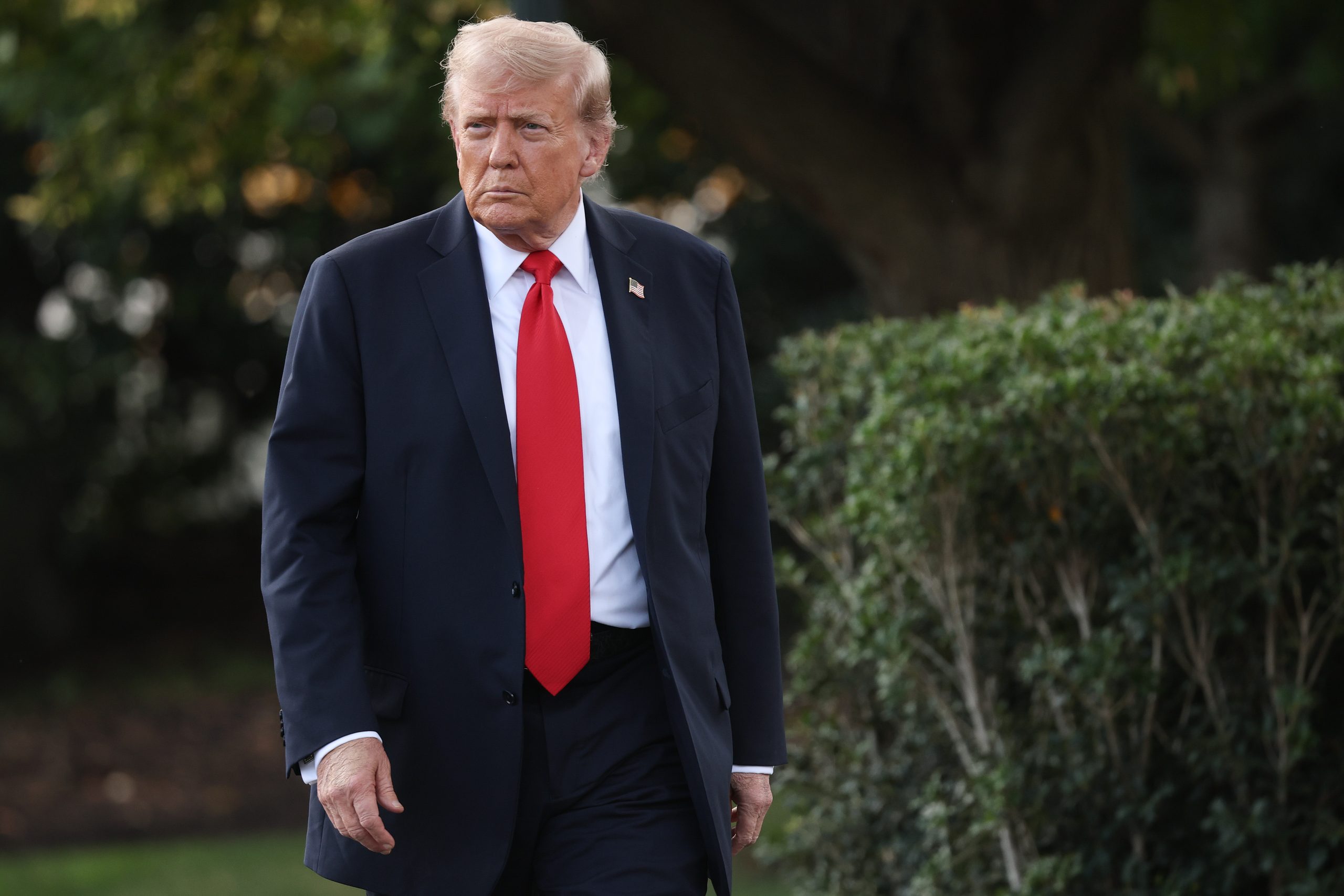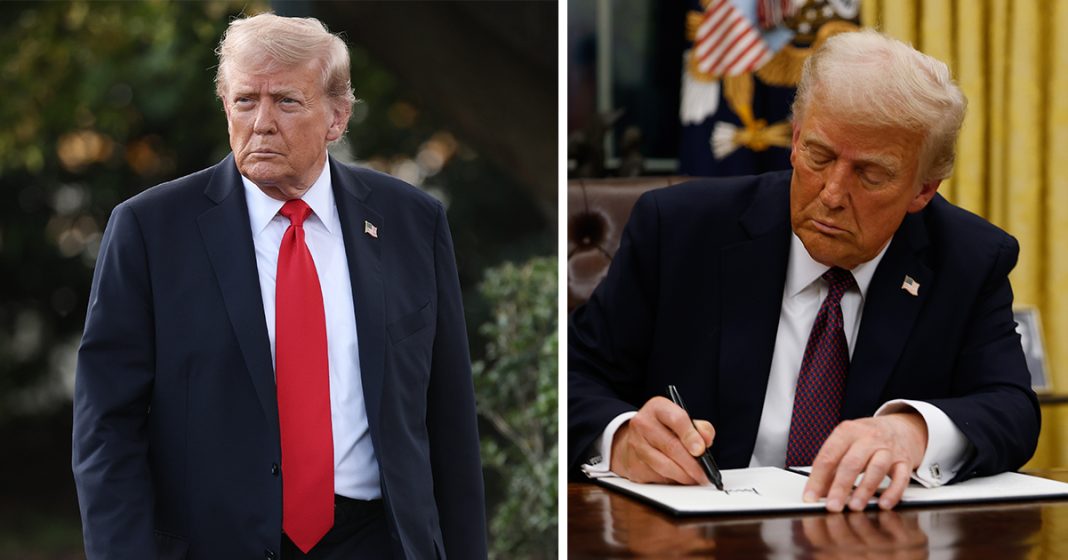Trump’s Bold Commitment: The $2,000 Dividend Promise
In the realm of American politics, promises made by politicians often elicit both hope and skepticism. Donald Trump, the former president of the United States, is no stranger to making ambitious pledges that capture public attention. Recently, he reignited discussions with a bold commitment to distribute a $2,000 dividend to nearly all Americans, excluding those in high-income brackets. This announcement, made via his social media platform Truth Social, has sparked significant debate surrounding its feasibility and implications. As the political environment becomes increasingly charged, this promise adds another layer to the ongoing discourse about economic recovery and government responsibility.
A Promise Rooted in Tariffs
Trump’s announcement came in the context of his controversial tariff policies, which he claims have generated substantial revenue for the government. In his post, he stated, “People that are against Tariffs are FOOLS!” emphasizing the favorable economic conditions, citing low inflation rates and a thriving stock market. He argues that these factors position the country well for such a financial endeavor. According to him, the revenue collected from tariffs, which predominantly target imports from countries like China, would be the source of the promised dividends, potentially benefiting millions of Americans. This foundational premise raises questions regarding the sustainability and ethical implications of relying on tariffs as a primary revenue source.
Details and Doubts Surrounding the Dividend
While the promise of a $2,000 payment sounds appealing to many, the specifics remain murky. Trump did not provide a clear timeline for when these payments would occur, nor did he detail the criteria for eligibility beyond the exclusion of high-income individuals. This lack of clarity has led to skepticism among economists and analysts, who have raised concerns about the practicality of such a massive financial undertaking. For instance, the ambiguity surrounding what constitutes a “high-income” bracket raises further questions: would it be based on individual income, household income, or both? This opacity only adds to the uncertainty that surrounds the promise.
The Financial Implications
Analysts have pointed out two primary hurdles that could hinder the realization of this promise. The first is the sheer financial cost of implementing such a dividend. Estimates suggest that paying $2,000 to all qualifying adults could range from $300 billion to $513 billion, depending on how many individuals are considered eligible. For example, if the cutoff for high-income earners is set at $100,000, approximately 150 million adults would qualify, resulting in a potential cost nearing $300 billion. In contrast, the revenue generated from tariffs currently stands at about $90 billion, presenting a significant gap between income and expenditure. The disparity raises a crucial question: Is it fiscally responsible or even feasible to promise such a payout given the current state of U.S. finances?

Legal Challenges on the Horizon
Beyond financial concerns, there are also substantial legal obstacles that could impede the distribution of dividends. Recent court rulings have questioned the legality of Trump’s tariff implementations, with several lower courts deeming his use of emergency powers to enforce these tariffs illegal. If these legal challenges continue and result in the collapse of the tariff framework, the anticipated dividend payments could vanish along with it. This uncertain legal landscape adds another layer of complexity to the promise Trump has made. The implications of judicial actions could be profound, affecting not only this specific dividend plan but also the broader framework of trade policies under previous and future administrations.
Looking Ahead: What’s Next for Trump’s Dividend Plan?
In a recent update, Trump suggested that any potential dividend payments would likely be delayed until 2026. During a conversation with reporters aboard Air Force One, he reiterated his commitment to the idea, stating, “The tariffs allow us to give a dividend. We’re going to do a dividend and we’re also going to be reducing debt.” Despite these assertions, Treasury Secretary Scott Bessent emphasized the need for legislative backing to actualize such a plan, indicating that political maneuvering will be essential for the dividend’s realization. This highlights a critical paradox: while the promise may be politically advantageous, the execution requires bipartisan collaboration, which is often difficult to achieve in today’s polarized political climate.
The Impact of Broken Promises
Trump’s history of making promises that often go unfulfilled is well documented. While many political leaders face scrutiny for their commitments, failing to deliver on a $2,000 dividend could have lasting repercussions. Unlike broader promises concerning legislation or policy reform, a direct financial pledge of this magnitude is more tangible and memorable for the electorate. Should Trump fail to follow through, it might incite significant backlash from those who expected relief during challenging economic times. This situation is compounded by the fact that many Americans are still grappling with the economic impact of the COVID-19 pandemic, making this pledge even more significant as a symbol of hope and support.
Conclusion: Will Trump Deliver?
As the political landscape evolves and economic conditions fluctuate, the question remains: Will Donald Trump deliver on his promise of a $2,000 dividend? The stakes are high, and many Americans are watching closely to see if this ambitious pledge will materialize or fade into the annals of political promises that never came to fruition. As public opinion continues to form around this potential payout, the implications of Trump’s commitment could resonate far beyond the financial realm, influencing future political campaigns and public trust in government undertakings. Ultimately, the answer to this question will not only shape Trump’s political future but could also redefine the expectations that Americans hold for their leaders in terms of accountability and transparency.

















